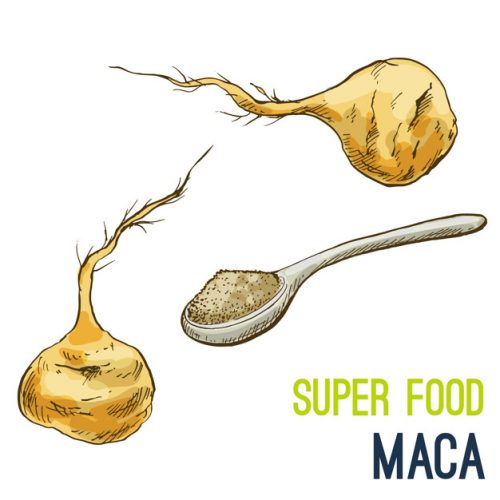There has been a lot of recent buzz about the benefits of adding maca, a Peruvian root, to your diet.
Those who have eaten maca report a variety of benefits, but the jury is still out regarding its exact uses for health and medicinal purposes.
This plant is still being studied, although the residents of the Andes region where it grows have long sworn by it.
Pushing all hyperbole and extravagant claims aside, here are several hard and fast facts about maca:
- Maca is a radish-like vegetable that has grown in the Andes for millennia. It has long been used for medicinal and culinary purposes by the Andeans. It is a member of the mustard plant family and establishes huge root systems. When maca is used as a food or medicine, its roots are harvested, not the green leaves that are above ground.
- Andeans have long valued maca for its high nutrition and its stimulating properties. They have used it to treat fatigue, anemia and even tuberculosis and infertility. Even the ancient Incas used maca.
- Maca comes in powdered, solid or liquid (extract) form and can be found in many health food stores. It can be purchased in capsules or tablets. The Andeans eat maca in porridge most often, and it is a staple in their diet.
- Indisputably, maca contains high levels of iron, potassium, zinc, calcium and magnesium. It is higher in iron and iodine than the potato, for example. It is also rich in antioxidants and vitamin B-12, which improve one’s energy levels.
- Maca’s reputation as an aphrodisiac could be true, although further tests are being done to verify this claim. The root does contain some elements that could be used to treat erectile dysfunction, for instance, and it has seemed to increase women’s sexual satisfaction also. Stay tuned for scientific proof of this claimed property of maca. Any other medicinal uses of maca are not independently verified by the scientific community yet. Maca might also relieve some symptoms of menopause .
- Maca could also be useful in improving the stamina of patients undergoing cancer treatments. The Memorial Sloan-Kettering Cancer Center is investigating this now.
- As with any substance, you should check in with your health care provider before buying huge quantities of maca. If you suffer from thyroid problems or are pregnant or nursing, don’t take maca.
- A typical dose of maca is 450 mg in pill form, taken three times per day with food.
- Maca can be found mixed with chocolates in some stores. The herb is added to a variety of snacks and can be purchased as a powder and added at home to cookie and other baked goods recipes. Some people add maca to smoothies, salads, soups and teas as well. Judgments on its taste range from pleasant to inoffensive.
Researchers continue to investigate the effects of maca on human beings. If you were to travel to the Andes, the people would probably tell you that maca can solve everything from infertility to tuberculosis.
Although testing in modern laboratories has not confirmed such claims, the initial results are promising to back the claim that maca increases energy and sexual performance, a claim the Andeans have long made, based on watching animal behavior after livestock have feasted on the plant.
No extremely harmful side effects have been identified with maca, when taken in reasonable dosages.
At this point, the idea of “it can’t hurt but could help” seems to apply. Maca is loaded with all kinds of fantastic nutrients and could boost your body’s intake of several important vitamins and minerals as you ingest tablets or sprinkle maca powder on a variety of foods or in various recipes.




